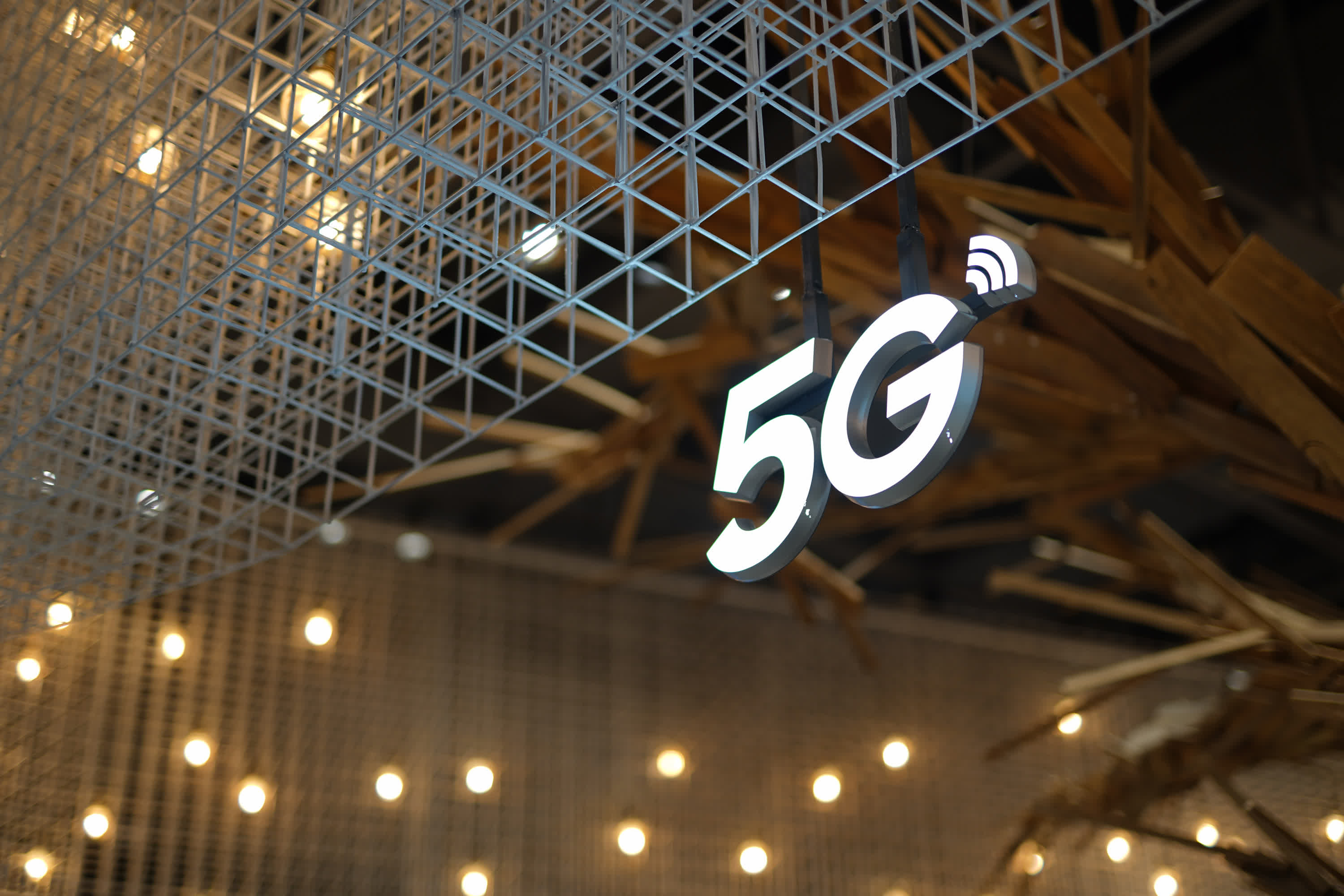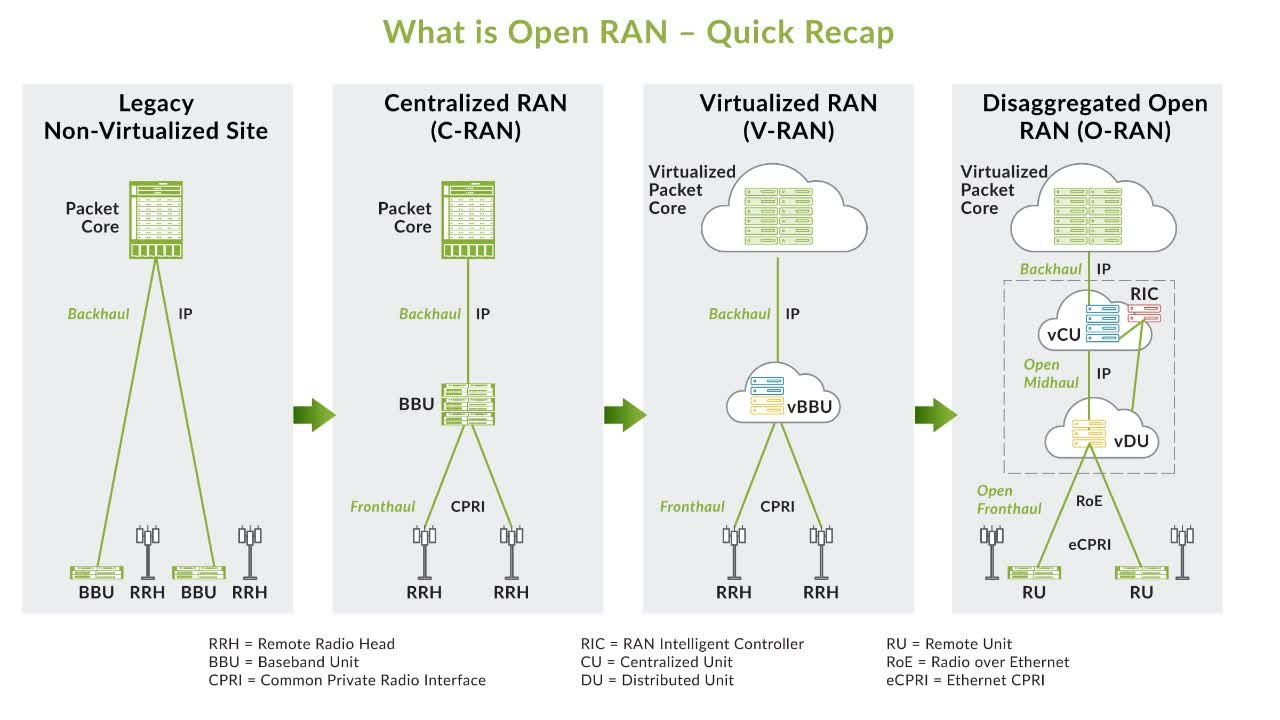Why it matters: While there hasn't been a whole lot of groundbreaking 5G news on the consumer front for some time, it's clear there's a whole lot of work and innovation happening in another part of the 5G ecosystem: infrastructure. There's growing activity from traditional "compute" industry vendors eager to make an impact on the telco world. Everyone from chip companies like AMD, to server hardware manufacturers such as Dell, to software houses like Red Hat are doubling down on their efforts to help disrupt the market.
Most of these developments aren't exactly new, but in the lead-up to this year's Mobile World Congress (MWC) in Barcelona, it's clear that there's more momentum here than the industry has seen in some time.
All the companies we just mentioned have already announced their telecom infrastructure news before the show. Meanwhile, a much larger group of traditional tech industry companies are expected to unveil their news at the show.
The telco industry is in the midst of a game-changing transition to a virtualized, software-defined, open standards world when it comes to network infrastructure.
The reasons for this seeming explosion of 5G infrastructure news are many. Key among them is that the telco industry is in the midst of a game-changing transition to a virtualized, software-defined, open standards world when it comes to network infrastructure. After decades of being dominated by a few specialized hardware vendors (notably Ericsson, Nokia and, more recently, Samsung Networks) that's quite a shock to the system.
As others have pointed out, it's akin to the large and challenging transition that many businesses faced when they first started virtualizing their server workloads and then moving some of them to the cloud many years ago. Not only did that require new ways of thinking, but there's also new types of software and software development models, a shift in operations from a hardware-centric world to a software-defined one. Plus, there are significantly higher expectations for reliability in the telco world because, while having any major cloud computing service go down is bad, having an entire mobile network go down is way, way worse.
These higher reliability demands are also part of the reason why it's taken the telco industry so long to start making these types of moves. Well, that, and the fact that carriers tend to have a much more conservative, utility-like mindset when it comes to integrating advanced technologies.
To put it simply, installing, configuring, running, and automating all the elements necessary to power today's cellular networks is, it turns out, hard, complex work. The task is particularly daunting for 5G networks because of all the inherent changes needed to modernize, virtualize and "cloudify" the various parts of a typical network, from the RAN (radio access network) to the network core in the 5G world.
The complexity of the work also explains why so many companies see opportunities. There's a great deal of tasks to be done, software to be deployed, hardware to be managed, data to be accelerated, and processes to be automated in a geographically dispersed networks often consisting of hundreds of thousands of sites. After multiple years of delays, there seems to be a burst of energy now focused on these many challenges. Not only are we seeing an increase in the variety and sophistication of the product offerings, there's a tremendous amount of news related to partnerships, joint development efforts and other collaborative work.
All of this reflects that building and modernizing 5G networks is incredibly difficult and beyond the scope of any single organization. It also highlights that even with standards like Open RAN (ORAN), it's challenging to get all the necessary pieces to work together at all, let alone in an intuitive manner that's easy to replicate across thousands of sites. Of course, there's also the practical reality that these types of transitions take many years to occur and many enhancements, alterations and tweaks to offerings are going to be required along the way. Finally, you can't ignore that not everyone is completely bought into the ORAN vision as it stands, so there can be philosophical barriers to overcome as well.
Mix all this together and you can start to see what a challenging task the modernization of 5G network infrastructure really is. But as the virtualization and "cloudification" of the enterprise computing world has clearly shown us, it is possible to get there and, already, important steps are being made.
Getting back to the early news vendors, AMD announced the establishment of a Telco Solutions Testing Lab that's being used to test and verify a variety of telco-focused software across not only its CPUs and GPUs, but the Adaptive SoCs, SmartNICs, FPGAs, DPUs and radios it obtained as part of its purchases of Xilinx and Pensando Systems. Interestingly, it also announced a partnership with Nokia, reflecting that traditional network hardware vendors have all started adapting some of their solutions in software form to work on general purpose servers. They also debuted some new additions to its line of Zynq cellular radio platform chips.
For its part, Dell introduced some new PowerEdge servers specifically designed for telco applications and announced a new partnership with Red Hat. The goal of that deal is to release preconfigured systems leveraging Red Hat OpenShift and Red Hat Advance Cluster Management for Kubernetes that let carriers who prefer the Red Hat platform (versus, say Wind River or other options) build cloud-native network functions that run seamlessly on the new hardware.
In the process, telcos who use them can reduce their costs and increase the flexibility of their offerings. Interestingly, Dell announced an expanded version of the Open Telecom Ecosystem Lab it debuted last year to also help with the ongoing challenge of making all these pieces work together. Finally, Dell also unveiled a Private Wireless Program and a specific release with Airspan and Expeto to make it easier for enterprises to create their own private 4G and 5G networks.
It's true that network infrastructure advancements are not as exciting as shiny new phones or groundbreaking 5G services, but they are still incredibly important. After all, it's that infrastructure which ensures that exciting new devices can function, and whizbang new services are able to operate. It seems clear that 2023 is going to be a year where more of the 5G industry's attention is going to be on the often "invisible" infrastructure than anything else. I'm willing to bet, however, that means we'll see some very visible and exciting new advances in 2024.
Bob O'Donnell is the founder and chief analyst of TECHnalysis Research, LLC a technology consulting firm that provides strategic consulting and market research services to the technology industry and professional financial community. You can follow him on Twitter @bobodtech.

